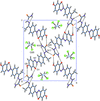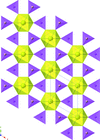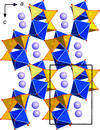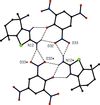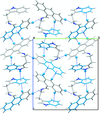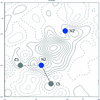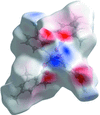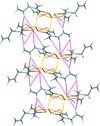issue contents
September 2017 issue

Cover illustration: Structures that contain hydroxyl and secondary and primary amine groups are sometimes determined incorrectly because of an assumed geometry of these groups from which the applied constraints or restraints were inferred. In such cases, the correct geometry is missed as it is not verified by inspection of the difference electron-density maps. The structure of a molecular salt, C10H13N4+·N3-, has been redetermined from the data published by Qian & Huang [Acta Cryst. (2010), E66, o3086]. The improvement of the present redetermination consists in a correction of the site-occupancy parameter of the bridging H atom between the pyridine rings, as well as of its position. The present study has shown that the bridging H atom (site symmetry 2) is involved in a symmetric N-H N hydrogen bond, which is one of the longest ever observed [N
N hydrogen bond, which is one of the longest ever observed [N N = 2.678 (3) Å]. See: Fábry [Acta Cryst. (2017). E73, 1344-1347].
N = 2.678 (3) Å]. See: Fábry [Acta Cryst. (2017). E73, 1344-1347].
research communications




































































 journal menu
journal menu











